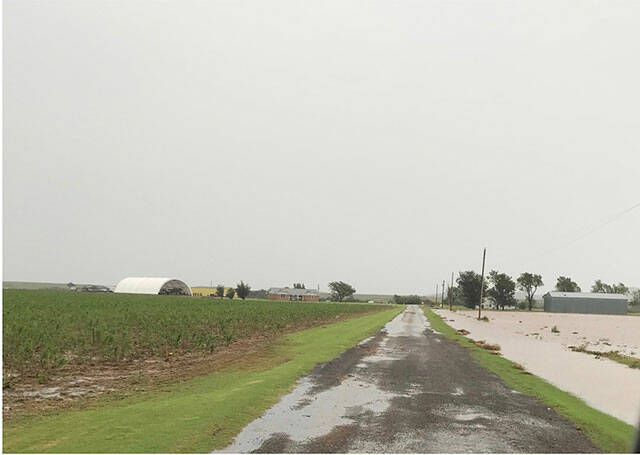This commentary is part of an ongoing series, “Green Briefs,” by Vashon’s environmental leaders and activities, presented in partnership with The Whole Vashon Project.
Walter Jehne is an Australian soil microbiologist with a venerable career advising internationally, including the United Nations, on soil science.
He has an interesting story to tell about how CO2 came to dominate the story about the climate crisis, as follows. Back in Jimmy Carter’s presidency (that enlightened moment when there were solar panels on the White House), scientists briefed Carter about a growing threat to humanity: the planet was heating up due to ever-increasing greenhouse gas emissions in the atmosphere.
What are these gases and how best to introduce this troubling news to the American public, Carter wondered? 95% is water vapor, he was informed. The remaining 5% is CO2 and assorted gases such as methane and nitrous oxide.
It was suggested that the public would most easily grasp the problem with a timeline graph, showing how greenhouse gases have been rising over the years. But the cycling of water vapor is too variable to render this way, so it was decided to present a graph about how CO2 has been accumulating as an increasingly dense barrier to planetary cooling. (And in 2007, Al Gore amplified the same message.)
Turns out this CO2 focus has missed an essential part of the story, said Jehne, which is about the role of healthy soils in regulating the earth’s water cycle.
“While considerable effort has been spent on understanding the role of carbon dioxide as a greenhouse gas, its role in the overall heat dynamics of the planet is dwarfed by the role of water,” wrote John Feldman, a New York filmmaker who is working on a documentary about Jehne and this topic.
Jehne’s message: If we turn our attention to water, we can safely and effectively cool the planet within decades.
What does this mean? It means that although we obviously need to reduce CO2 emissions—especially from transportation, manufacturing and industrial agriculture—a huge percentage of the earth’s soils have been so degraded by deforestation, ignorance and greed, their ability to store and cycle water is destroyed or severely compromised.
Presently, every continent has regions experiencing drought conditions, showing us how this vital part of the equation has been misunderstood and discounted by policymakers.
I was moved to comment this week on a New York Times opinion piece by economist Paul Krugman, because it is a typical example of our mistaken climate crisis narrative. Krugman’s work is titled “What a Dying Lake Says About the Future.” He’s writing about the worrisome disappearance of The Great Salt Lake in Utah, which has already lost two-thirds of its surface area.
The Times published my response and I’m sharing it here:
“Krugman’s headline is wrong. It should read ‘What a Dying Lake Says About Our Ignorance of Nature’s Laws.’ Maybe decisions about dealing with the climate crisis would be different if they were made by people who do not live and work in urban environments. Nature is an abstraction in all of these discussions, which persist in focusing on CO2 emissions, when it is well known that the root cause of desertification is the reduction of a region’s plant life. California’s Central Valley used to be a wetland.
The Sahara Desert used to be green—the oldest cave paintings show herds of cattle, the later ones, camels. What happened? Destruction of soils that hold water and sequester carbon, removal of green cover, poor irrigation practices—and today, we can add the heat-radiating effects of cement and asphalt around the world. The earth has lost 50% of its green cover—how could anyone believe this is not the bigger crisis—and also where the greatest hope lies? The work of individuals such as the ecologist Allan Savory, whose 2014 TED talk about desertification sparked the growth of regenerative agriculture, and soil scientist Walter Jehne, with his teachings about regreening the planet by restoring the ‘soil-carbon sponge’ needs to be front and center in policy-making—but are there people out there who have the capacity to “get it?”
As Feldman said, “Nature regulates the climate in order to sustain itself. Our job is to restore and regenerate Earth’s ecosystems in order to stabilize these regulatory processes.”
Rondi Lightmark is the founder of The Whole Vashon Project. To find out more about the organization, and get involved, visit wholevashonproject.com.
For further information on the topics mentioned in Rondi Lightmark’s commentary, visit the following resources.
Paul Krugman: “What a Dying Lake Says About the Future,” tinyurl.com/2m39vz7e
Walter Jehne: Cooling The Climate Mess With Soil And Water, bit.ly/39BCesb
How farmers are dealing with drought by restoring the water cycle in soil, tinyurl.com/mr2wfn6j
Steamy Relationships: How Atmospheric Water Vapor Supercharges Earth’s Greenhouse Gas Effect, tinyurl.com/3pfc39m2
Regenerating Life: A film in production by John Feldman, bit.ly/3zQMkzZ



